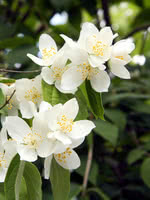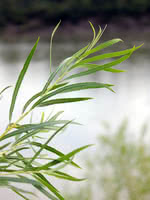Mon-Fri 9am - 5pm Mountain time
Sandbar Willow vs Mock Orange
Philadelphus coronarius
Salix exigua
NOT AVAILABLE THIS SEASON - MIGHT RETURN
CUSTOM GROW
Mock Orange is an ornamental shrub known for its fragrant, white flowers. The scent is often described as orange-like with a hint of jasmine. Attractive to pollinators, hummingbirds, and humans alike.
Mock Orange is highly versatile, and can be used as an ornamental shrub, either alone or as a hedge. It is well suited for streambank stabilization and riparian zone restoration, due to its ability to grow in low, moist areas as well as those that are high and dry. Lewis Mock Orange also has the capability of being used in soil bioengineering projects such as live staking.
Sandbar Willow is a deciduous species native to much of North America. This mid-sized, fast-growing shrub can be found in very wet areas, making it an ideal plan to use in a wet area with erosion risk.
Sandbar Willow has long, narrow green leaves, and its grassy narrow stems give it an attractive, bamboo-like appearance.
All willow are important to native pollinators each spring as they have higher amounts of pollen and nectar early each growing season when other food sources are scarce.

